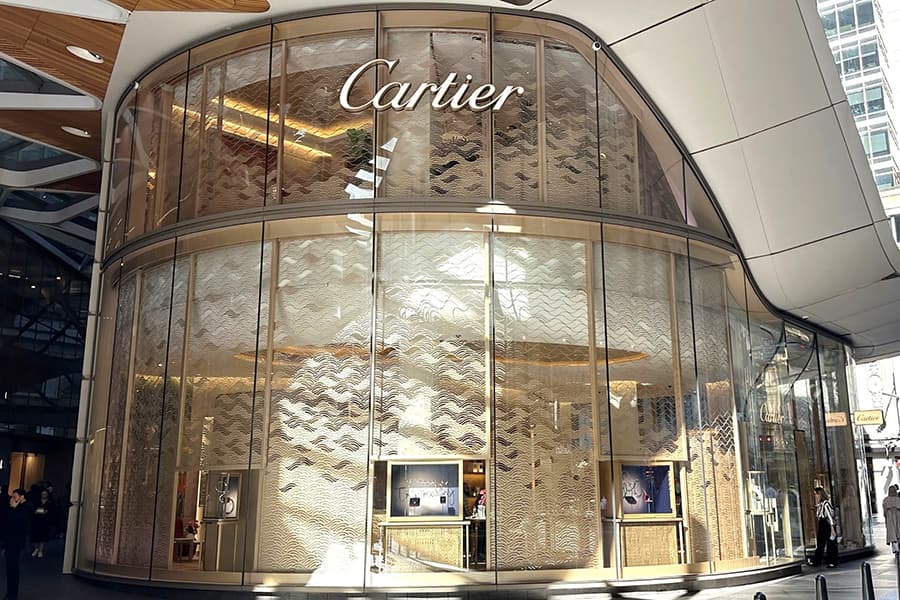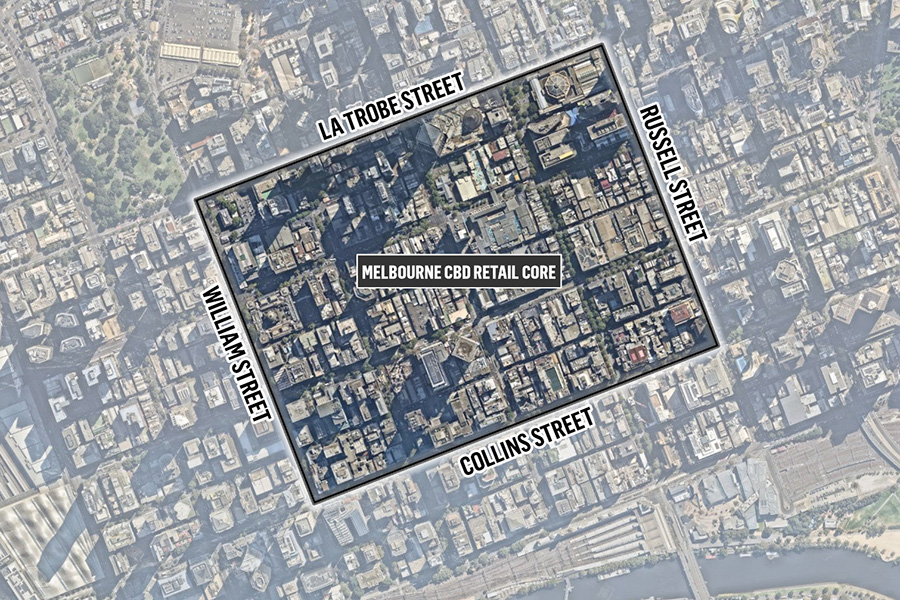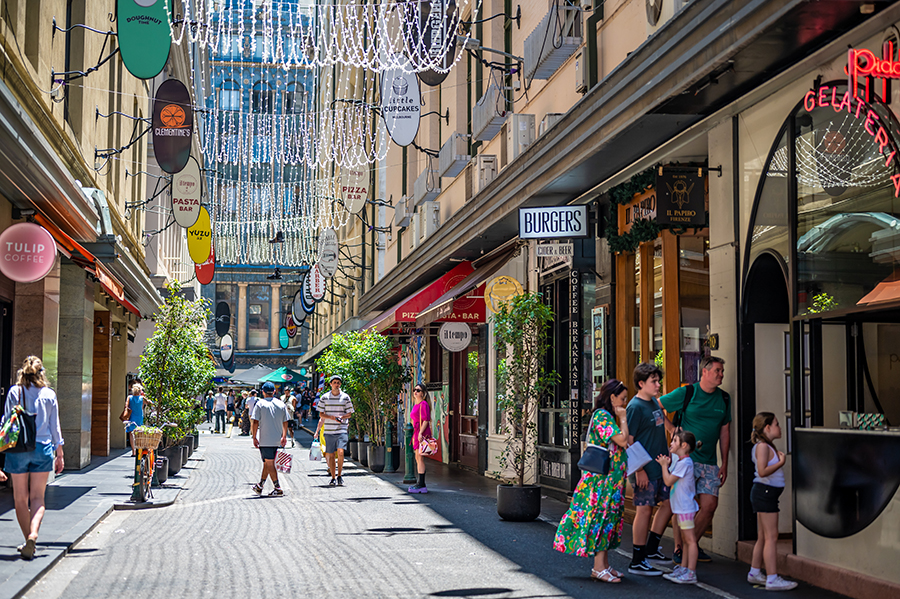Our centres are in demand. Sales activity in 2014 was the largest on record. Everyone wants them, from Institutional Funds to Unlisted Superannuation Funds. Yields are down, reflecting demand. Will it last? Is the bubble about to burst? According to Tony Dimasi the answer is no, but that doesn’t mean we can be complacent.
Australian shopping centres are in huge demand at the moment, and have been for some time. Jones Lang LaSalle, in its 2015 Australian Shopping Centre Investment Review and Outlook noted that the volume of transactions for 2014 reached $7.5 billion, making it the third consecutive record year. JLL also noted an acceleration in the yield compression cycle of close to half a percent on average.
Colliers International, in its Retail Review for H1 2015, noted that activity during 2014 was dominated by trading of neighbourhood shopping centres and, even more so, sub-regional centres, and that strong demand for retail assets has continued into 2015.
The sale in August 2015 of the revitalised Spencer Outlet Centre in Melbourne, at a reported price of more than $125 million and a yield “in the low fives” to an Asian purchaser, is a neat example of the current state of play.
Many individual transactions over the past year have occurred at very sharp yields – below 6% is no longer exceptional, with a few transactions even below 5%. There is every expectation that shopping centre yields will continue to tighten throughout the remainder of 2015, and more than likely into 2016, so that yields below 6% will become commonplace, while even below 5% might not be unusual.
Interestingly, most of the sales activity over the past year and a half has occurred in the sub-regional centre space, i.e. Little Guns, a space in which there appears to be competing views as to the general outlook.
The background to this rapid increase in interest in acquisition of retail property in Australia has been a retail turnover climate which is patchy, although generally improving. The ABS Retail Turnover Series reported annual growth of 4.8% for the year ended June 2015, with growth rates being strongest in household goods and food catering, i.e. takeaway food, cafés and restaurants.
One of the concerns, when asset prices increase significantly and rapidly, is that there might be a bust just around the corner to end the boom. That was what happened in 2007, following the rapid price escalation seen in the years prior, and with further complications from the GFC, there was virtually no capital available for anything relating to shopping centres, such as expansions or acquisitions, for the subsequent two or three years. Yields pushed out significantly, particularly for centres which were seen as being of lower quality.
A combination of factors has created the current situation, and the question to ask, as always during periods of boom, is: what is different this time?
The first factor which has underpinned the increasing prices for retail assets has been the very welcome, if still unremarkable, improvement in underlying retail sales. A growth rate of 4.8%, albeit patchy with department store and discount department store sales still remaining poor, was a big improvement on the growth rates achieved over the previous three to four years. However, in the years prior to 2007, retail sales growth generally had been much stronger, and for much longer, than we have witnessed over the past year.
The recent spending growth has resulted from a combination of very low interest rates over an extended period; significantly improved household balance sheets after the adjustments, made over the previous four years as debt, was paid off; a much lower Australian dollar; a strong housing market; and relatively low fuel prices. Very substantial population growth also helps enormously, with the current growth rate in Australia running at 1.6%. Immigration is running at 200,000 to 250,000 a year, making up the bulk of the population growth, and is expected to continue at similar levels for the next three or four years at least.
The threat of online sales continuing to cannibalise sales at physical stores seems to have had little, if any, bearing on centre values. Interestingly, the September 2015 NAB Online Retail Sales Index, published by Quantium, reports total online sales at $17.6 billion, up 5.7% on the prior year. That growth rate is OK, but not too different to the recent growth rate in physical store sales, and while $17.6 billion is a lot of money, it is equivalent to a still quite modest 6.1% of total retail turnover as reported by the Australian Bureau of Statistics ($288 billion for the year to August).
The weight of funds chasing Australian property is another significant factor. It is primarily from unlisted superannuation funds, which have to find a home for the many additional billions of dollars which they have to invest each year, and also from offshore investors, who are estimated to have acquired in the order of $1 billion of Australian retail property in 2014, and whose presence and profile in the Australian market has increased during 2015.
All of these factors have been important in driving demand for these assets, but they have been complemented by some particular attributes of Australian centres. The first is the consistency of trading (i.e. sales) performance over time, which is readily apparent to anyone who tracks the yearly ranking tables produced in SCN for Big Guns, Little Guns and Mini Guns.
The demonstrated resilience of the Australian retail sector in the post-GFC years, compared to retailing everywhere else in the western world, has also been important in this regard.
The second is the transparency in the Australian shopping centre market, in my view, offering a more detailed and incisive level of reporting of trading and financial performance than is available anywhere else. Australian shopping centre managers not only carefully track the trading (i.e. sales performances) of their centres, as a critical tool in seeking to improve that performance, but also generally report that information to the market, resulting in a particularly well-informed marketplace.
Nonetheless, a period of rapid escalation in asset prices such as we have witnessed over the past year and a half always raises issues of concern, and the current period is no different. This is the case in part because although vacancy rates have been gradually declining, reflecting the recent improvements in retail sales, leasing conditions, particularly to attract new tenants, remain quite challenging by historical standards, particularly in smaller centres.
There are, however, some noteworthy differences, I believe, between the current situation and what we witnessed in 2007. We will have to wait and see whether or not these differences will be material in terms of how the current boom plays out, but my expectation is that, at this point, the market is much more soundly based than was the case in 2007. Any correction should therefore be simply measured, rather than causing the short-term carnage of 2008/09.
The first difference I can see is that, while yields have certainly compressed, they are still generally not quite at the levels to which they descended in 2007 and, even more importantly, they have not yet compressed to anywhere near the same extent for what might be regarded as lower-quality assets. Indeed, a number of such centres have struggled to sell at all. That was not the case in 2007. Mind you, another few rounds of tightening and we could well be back at 2007 levels.
Another noticeable difference is that REITs have participated readily as vendors (as well as purchasers) over the past year and a half, taking the opportunity of high values and ready demand to dispose of centres deemed to be ‘non-core’. Again, in the previous boom it was generally held by almost all REITs that no centre was for sale, because it was too difficult to replace. REITs were net sellers of retail property in 2014, although a number of them continue to selectively acquire retail assets, which they consider offer them opportunities to improve their portfolios and their returns.
Yet another difference in the current climate, as compared with the previous boom, is a much lower level of gearing, with few, if any, REITs now geared to levels greater than 30%. That means they have headroom on their balance sheet to weather some harder times if they are around the corner.
Finally, even yields of 5%–6% still represent relatively high returns, compared with quality retail property in many or most other developed countries.
But we should still not kid ourselves. The basics determining centre values are really no different now, and we can expect yields to soften if interest rates rise and/or the Australian dollar firms.
The outlook on both these fronts, though, is generally positive, for the next year or two at least. There is some expectation of an increase in interest rates, but the RBA appears to be in no hurry, and any such increase would most likely be minor. For the Australian dollar, the greater likelihood appears to be of further softening, rather than strengthening, in the near and medium terms. So Australian shopping centres, especially well-performing ones, will remain hot property for some time yet.
SCN




















